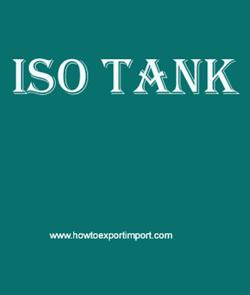 What is an ISO Tank?
What is an ISO Tank?
A cylindrical pressure vessel made of stainless steel, surrounded by a 20′ x 8′ x 8.5′ framework by various types of protective layers usually polyurethane and aluminum for the transport of hazardous and non-hazardous liquids in bulk. Different skins can be used with an ISO tank depending on the type of bulk cargo it is carrying. It has a manhole on the top along with at least one valve and another valve on the bottom. The tanks vary in size and type and can carry between 21,000 and 40,000 litres of liquid.
The tank container is widely accepted due to the ease of handling, cost effective and the ability to be inter-modally transported globally. It provides quality and safe containment assurance of the cargo. They are highly reliable, can withstand extreme pressure and damage, and safe way of transporting bulk liquids from place to place.
ISO tanks are designed to meet specific criteria according to the substance they will be carrying. They are highly unlikely to leak or rarely leak which significantly reduces the risk of spillage during movement and loading or unloading processes. It doesn’t require additional packaging materials for the cargo, it can maintain a specific temperature for temperature sensitive cargo and they can be transported by sea, railway, or roads just like general freight containers.
The main highlight of ISO tank is that it satisfies the prerequisites for both a storage container for dangerous cargo and a transportation container, which adds greatly to simplifying the formality procedures for transporting dangerous or risky cargo. The bulk liquids that can be transported in an ISO tank include:
Food Grade Liquids like Milk and other dairy, Juices, Alcoholic Beverages, Liquefied sugars, Molasses, Vegetable oils etc.
Non-Edible Liquids like Gasoline, Diesel, Heating oil, Industrial chemicals, liquefied petroleum gas etc.
Learn Exports Imports Free, Click here
Click here to know GST rate of your goods or service
The role of Reserve Bank of India
The Role of the International Chamber of Commerce (ICC)
Negotiation procedures and formalities of export bills
Non receipt of Cargo Arrival Notice, Can importer sue against shipping company
OBJECTIVES OF CUSTOMS CONTROL for EXPORT GOODS
OBL not released OBL not surrendered no telex release
Payment procedures in Triangular exports
Who is Stevedores
Who receives the amount of auctioned / resold imported unclaimed/un-cleared goods?
Why demurrage/detention waiver period is required at destination for import
How to import to India from Fiji?
How to export from India to Fiji?
How to export from Fiji?
How to export from Ethiopia?
Section 172 of CGST Act, 2017 Removal of difficulties
Section 170 Rounding off of tax, CGST Act, 2017
Sec 168 of CGST Act, 2017 Power to issue instructions or directions
Section 163 of CGST Act, 2017 Levy of fee
Publication of information in respect of persons in certain cases, Section 159 of CGST Act, 2017
Section 156 Persons deemed to be public servants, CGST Act, 2017
Power to collect statistics, Section 151 of CGST Act, 2017
Tax invoice under GST
What is Supply of Goods under GST
Supplier under GST
Meaning of SGST Credit for payment of IGST
Single registration under GST
What is Single Business vertical under GST
What is Sin or De-Merit Goods under GST
What is Show cause notice under GST